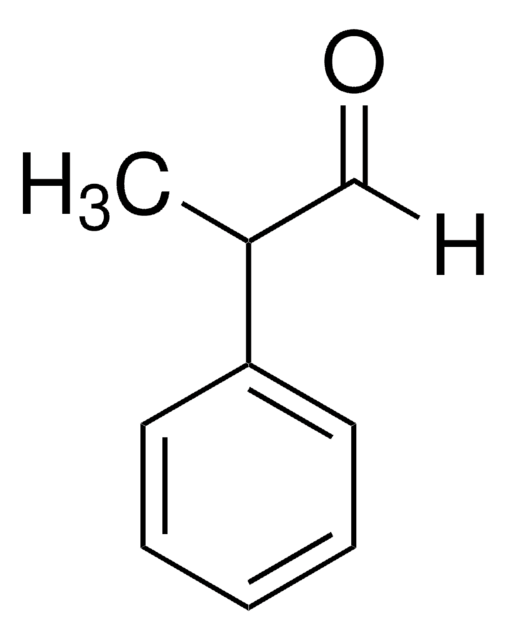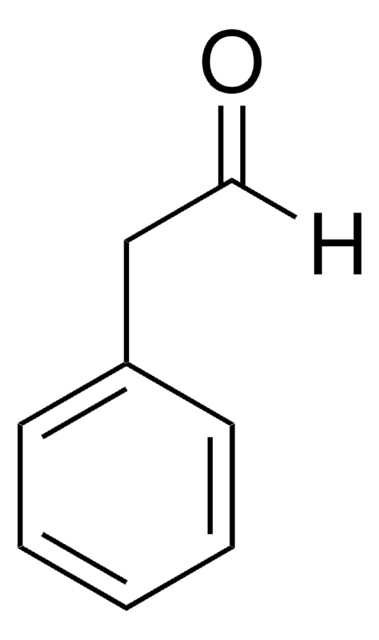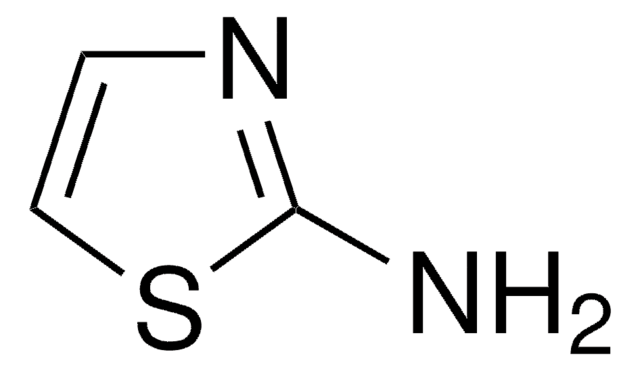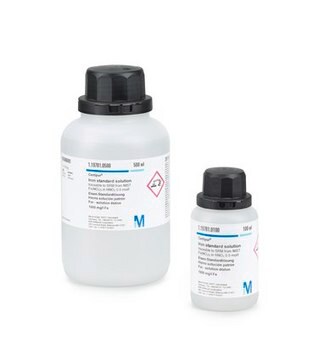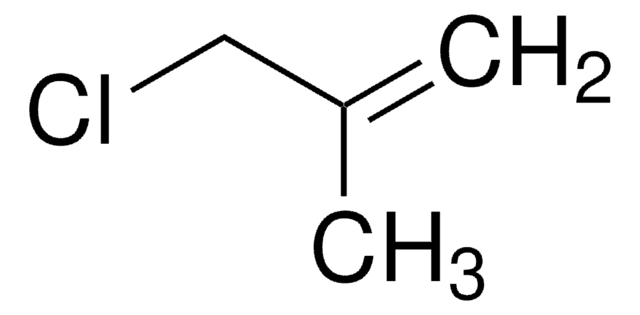W288608
2-Phenylpropionaldehyde
≥95%, FCC, FG
Sinonimo/i:
2-Phenylpropanal, Hydratropaldehyde
About This Item
Prodotti consigliati
Origine biologica
synthetic
Livello qualitativo
Grado
FG
Halal
Kosher
agenzia
meets purity specifications of JECFA
Conformità normativa
EU Regulation 1334/2008 & 178/2002
FCC
FDA 21 CFR 172.515
Saggio
≥95%
Indice di rifrazione
n20/D 1.517 (lit.)
P. ebollizione
92-94 °C/12 mmHg (lit.)
Densità
1.002 g/mL at 25 °C (lit.)
applicazioni
flavors and fragrances
Documentazione
see Safety & Documentation for available documents
Allergene alimentare
no known allergens
Organolettico
fresh; green; floral
Temperatura di conservazione
2-8°C
Stringa SMILE
[H]C(=O)C(C)c1ccccc1
InChI
1S/C9H10O/c1-8(7-10)9-5-3-2-4-6-9/h2-8H,1H3
IQVAERDLDAZARL-UHFFFAOYSA-N
Cerchi prodotti simili? Visita Guida al confronto tra prodotti
Categorie correlate
Descrizione generale
Applicazioni
- Cytotoxicity, early safety screening, and antimicrobial potential of minor oxime constituents of essential oils and aromatic extracts.: Explores the safety and effectiveness of 2-Phenylpropionaldehyde among other compounds in essential oils, highlighting its potential antimicrobial properties and implications for food safety and preservation (Strub DJ et al., 2022).
- Spectroscopic Evidence for a Cobalt-Bound Peroxyhemiacetal Intermediate.: This study provides spectroscopic evidence of a cobalt-bound intermediate in reactions involving 2-Phenylpropionaldehyde, advancing our knowledge of chemical reaction mechanisms and catalysis (Cho J et al., 2021).
Codice della classe di stoccaggio
10 - Combustible liquids
Classe di pericolosità dell'acqua (WGK)
WGK 1
Punto d’infiammabilità (°F)
174.2 °F
Punto d’infiammabilità (°C)
79 °C
Dispositivi di protezione individuale
Eyeshields, Gloves, type ABEK (EN14387) respirator filter
Scegli una delle versioni più recenti:
Possiedi già questo prodotto?
I documenti relativi ai prodotti acquistati recentemente sono disponibili nell’Archivio dei documenti.
Global Trade Item Number
| SKU | GTIN |
|---|---|
| W288608-10KG | |
| W288608-1KG | |
| W288608-5KG | |
| W288608-SAMPLE-K | 4061837517570 |
| W288608-10KG-K | 4061837835254 |
| W288608-1KG-K | 4061837835261 |
| W288608-5KG-K | 4061837835278 |
| W288608-SAMPLE |
Il team dei nostri ricercatori vanta grande esperienza in tutte le aree della ricerca quali Life Science, scienza dei materiali, sintesi chimica, cromatografia, discipline analitiche, ecc..
Contatta l'Assistenza Tecnica.